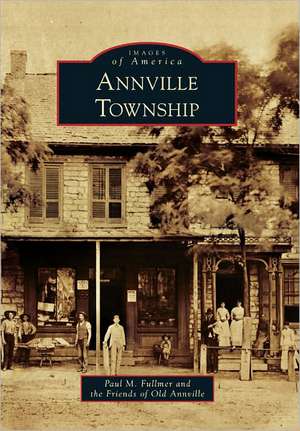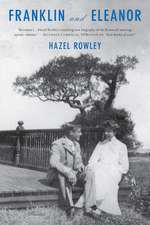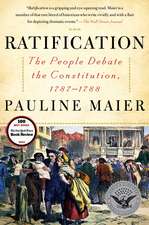Annville Township: Images of America (Arcadia Publishing)
Autor Paul M. Fullmer, Friends of Old Annvilleen Limba Engleză Paperback – 31 mai 2011
Din seria Images of America (Arcadia Publishing)
-
 Preț: 131.94 lei
Preț: 131.94 lei -
 Preț: 131.94 lei
Preț: 131.94 lei -
 Preț: 133.00 lei
Preț: 133.00 lei -
 Preț: 131.94 lei
Preț: 131.94 lei -
 Preț: 127.39 lei
Preț: 127.39 lei -
 Preț: 133.00 lei
Preț: 133.00 lei -
 Preț: 133.00 lei
Preț: 133.00 lei -
 Preț: 133.17 lei
Preț: 133.17 lei -
 Preț: 133.41 lei
Preț: 133.41 lei -
 Preț: 117.50 lei
Preț: 117.50 lei -
 Preț: 131.94 lei
Preț: 131.94 lei -
 Preț: 131.72 lei
Preț: 131.72 lei -
 Preț: 117.72 lei
Preț: 117.72 lei -
 Preț: 128.26 lei
Preț: 128.26 lei -
 Preț: 132.54 lei
Preț: 132.54 lei -
 Preț: 128.26 lei
Preț: 128.26 lei -
 Preț: 117.72 lei
Preț: 117.72 lei -
 Preț: 132.13 lei
Preț: 132.13 lei -
 Preț: 127.20 lei
Preț: 127.20 lei -
 Preț: 133.41 lei
Preț: 133.41 lei -
 Preț: 131.94 lei
Preț: 131.94 lei -
 Preț: 131.94 lei
Preț: 131.94 lei -
 Preț: 131.94 lei
Preț: 131.94 lei -
 Preț: 127.20 lei
Preț: 127.20 lei -
 Preț: 131.94 lei
Preț: 131.94 lei -
 Preț: 127.20 lei
Preț: 127.20 lei -
 Preț: 132.76 lei
Preț: 132.76 lei -
 Preț: 120.40 lei
Preț: 120.40 lei -
 Preț: 127.39 lei
Preț: 127.39 lei -
 Preț: 127.61 lei
Preț: 127.61 lei -
 Preț: 133.00 lei
Preț: 133.00 lei -
 Preț: 136.28 lei
Preț: 136.28 lei -
 Preț: 133.17 lei
Preț: 133.17 lei -
 Preț: 118.31 lei
Preț: 118.31 lei -
 Preț: 131.94 lei
Preț: 131.94 lei -
 Preț: 133.17 lei
Preț: 133.17 lei -
 Preț: 133.17 lei
Preț: 133.17 lei -
 Preț: 133.41 lei
Preț: 133.41 lei -
 Preț: 133.41 lei
Preț: 133.41 lei -
 Preț: 133.00 lei
Preț: 133.00 lei -
 Preț: 131.94 lei
Preț: 131.94 lei -
 Preț: 131.94 lei
Preț: 131.94 lei -
 Preț: 133.00 lei
Preț: 133.00 lei -
 Preț: 133.41 lei
Preț: 133.41 lei -
 Preț: 131.72 lei
Preț: 131.72 lei -
 Preț: 131.94 lei
Preț: 131.94 lei -
 Preț: 128.02 lei
Preț: 128.02 lei -
 Preț: 131.94 lei
Preț: 131.94 lei -
 Preț: 176.10 lei
Preț: 176.10 lei -
 Preț: 118.13 lei
Preț: 118.13 lei
Preț: 133.00 lei
Nou
Puncte Express: 200
Preț estimativ în valută:
25.45€ • 26.61$ • 21.51£
25.45€ • 26.61$ • 21.51£
Carte indisponibilă temporar
Doresc să fiu notificat când acest titlu va fi disponibil:
Se trimite...
Preluare comenzi: 021 569.72.76
Specificații
ISBN-13: 9780738574608
ISBN-10: 0738574600
Pagini: 127
Dimensiuni: 165 x 231 x 13 mm
Greutate: 0.32 kg
Editura: Arcadia Publishing (SC)
Seria Images of America (Arcadia Publishing)
ISBN-10: 0738574600
Pagini: 127
Dimensiuni: 165 x 231 x 13 mm
Greutate: 0.32 kg
Editura: Arcadia Publishing (SC)
Seria Images of America (Arcadia Publishing)
Notă biografică
Descriere
Annville Township, located on the north bank of Quittapahilla Creek, was originally settled in the 1720s by millers who made use of the creek's power and surrounding farmland. As the town grew, several hotels were constructed; and in 1817, the Berks-Dauphin Turnpike was built as a toll road through the town. By 1840, Annville had 500 people, log and limestone houses, stores, taverns, churches, schools, and an academy. The arrival of the railroad in 1860 led to the building of factories to the east for the manufacture of flour, shirts, hosiery, handkerchiefs, and shoes. As the new industrialists built their Victorian mansions yet farther east, they completed a living timeline of Annville's history that extends from west to east and from mill to mansion.












